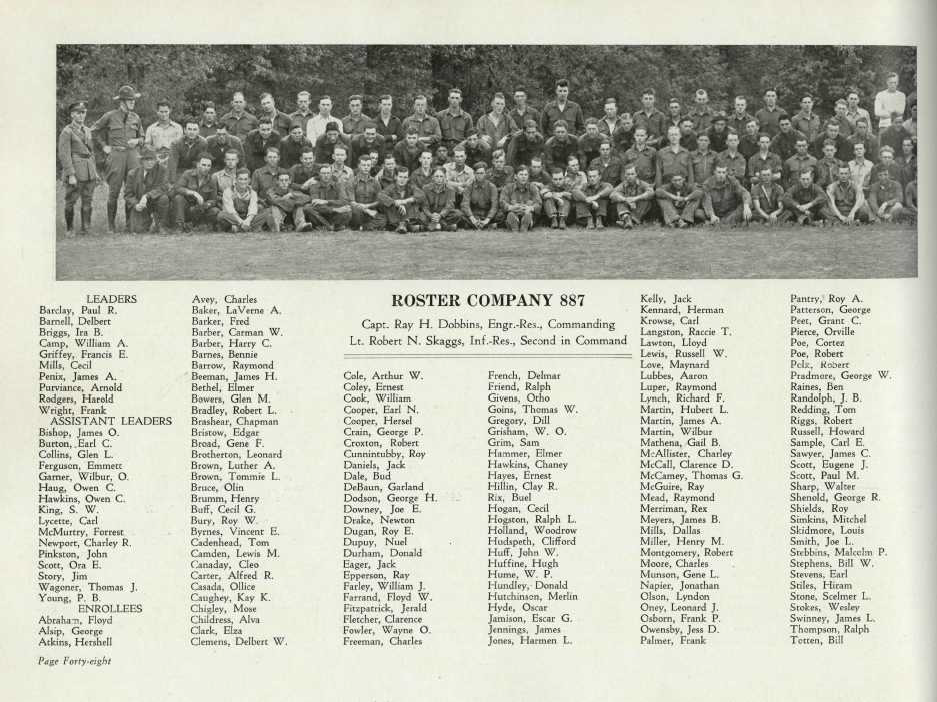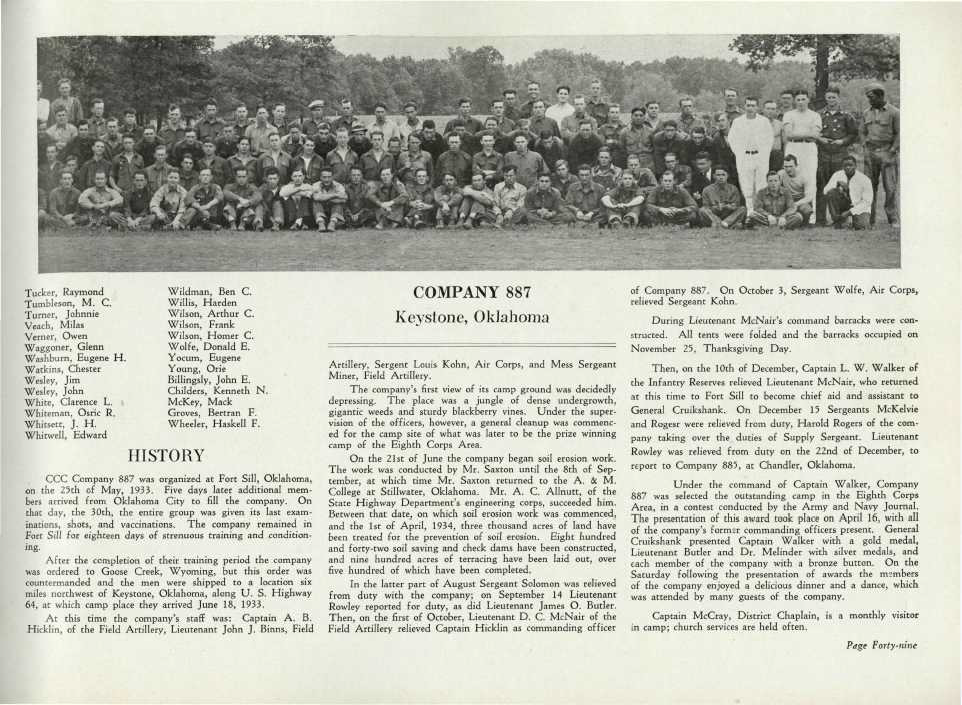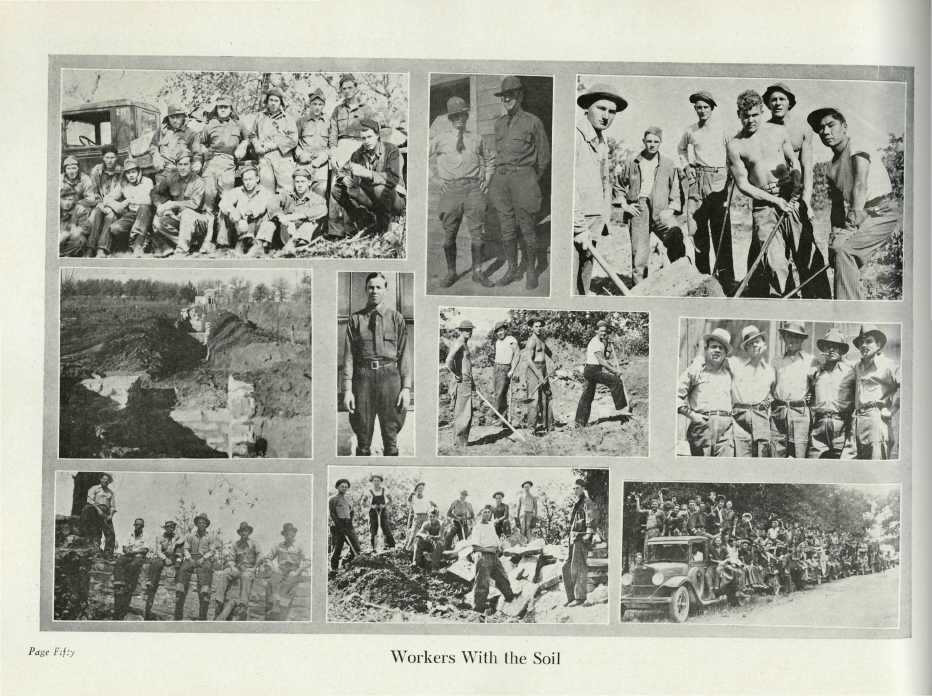Keystone, Oklahoma
Copied from Oklahoma District Civilian Conservation Corps Pictorial Review, 1938, page 49:
CCC Company 887 was organized at Fort Sill, Oklahoma, on the 25th of May, 1933. Five days later additional members arrived from Oklahoma City to fill the company. On that day, the 30th, the entire group was given its last examinations, shots, and vaccinations. The company remained in Fort Sill for eighteen days of strenuous training and conditioning.
After the completion of their training period the company was ordered to Goose Creek, Wyoming, but this order was countermanded and the men were shipped to a location six miles northwest of Keystone, Oklahoma, along U. S. Highway 64, ar which camp place they arrived June 18, 1933.
At this time the company’s staff was: Captain A. B. Hicklin, of the Field Artillery, Lieutenant John J. Binns, Field Artillery, Sergeant Louis Kohn, Air Corps, and Mess Sergeant Miner, Field Artillery.
The company’s first view of its camp ground was decidedly depressing. The place was a jungle of dense undergrowth, gigantic weeds and sturdy blackberry vines. Under the supervision of the officers, however, a general cleanup was commenced for the camp site of what was later to be the prize winning camp of the Eighth Corps Area.
On the 21st of June the company began soil erosion work. The work was conducted by Mr. Saxton until the 8th of September, at which time Mr. Saxton returned to the A. & M. College at Stillwater, Oklahoma. Mr. A. C. Allnutt, of the State Highway Department’s engineering corps, succeeded him. Between that date, on which soil erosion work was commenced, and the 1st of April, 1934, three thousand acres of land have been treated for the prevention of soil erosion. Eight hundred and forty-two soil saving and check dams have been constructed, and nine hundred acres of terracing have been laid out, over five hundred of which have been completed.
In the latter part of August Sergeant Solomon was relieved from duty with the company; on September 14 Lieutenant Rowley reported for duty, as did Lieutenant James O. Butler. Then, on the first of October, Lieutenant D. C. McNair of the Field Artillery relieved Captain Hicklin as commanding officer of Company 887. On October 3, Sergeant Wolfe, Air Corps, relieved Sergeant Kohn.
During Lieutenant McNair’s command barracks were constructed. All tents were folded and the barracks occupied on November 25, Thanksgiving Day.
Then, on the 10th of December, Captain L. W. Walker of the Infantry Reserves relieved Lieutenant McNair, who returned at this time to Fort Sill to become chief aid and assistant to General Cruikshank. On December 15 Sergeants McKelvie and Rogers were relieved from duty, Harold Rogers of the company taking over the duties of Supply Sergeant. Lieutenant Rowley was relieved from duty on the 22nd of December, to report to Company 885, at Chandler, Oklahoma.
Under the command of Captain Walker, Company 887 was selected the outstanding camp in the Eighth Corps Area, in a contest conducted by the Army and Navy Journal. The presentation of this award took place on April 16, with all of the company’s former commanding officers present. General Cruikshank presented Captain Walker with a gold medal, Lieutenant Butler and Dr. Melinder with silver medals, and each member of the company with a bronze button. On the Saturday following the presentation of awards the members of the company enjoyed a delicious dinner and a dance, which was attended by many guests of the company.
Captain McCray, District Chaplain, is a monthly visitor in camp; church services are held often.



Sources
- Oklahoma District Civilian Conservation Corps Pictorial Review, 1939, pages 48-50.



Recent Comments